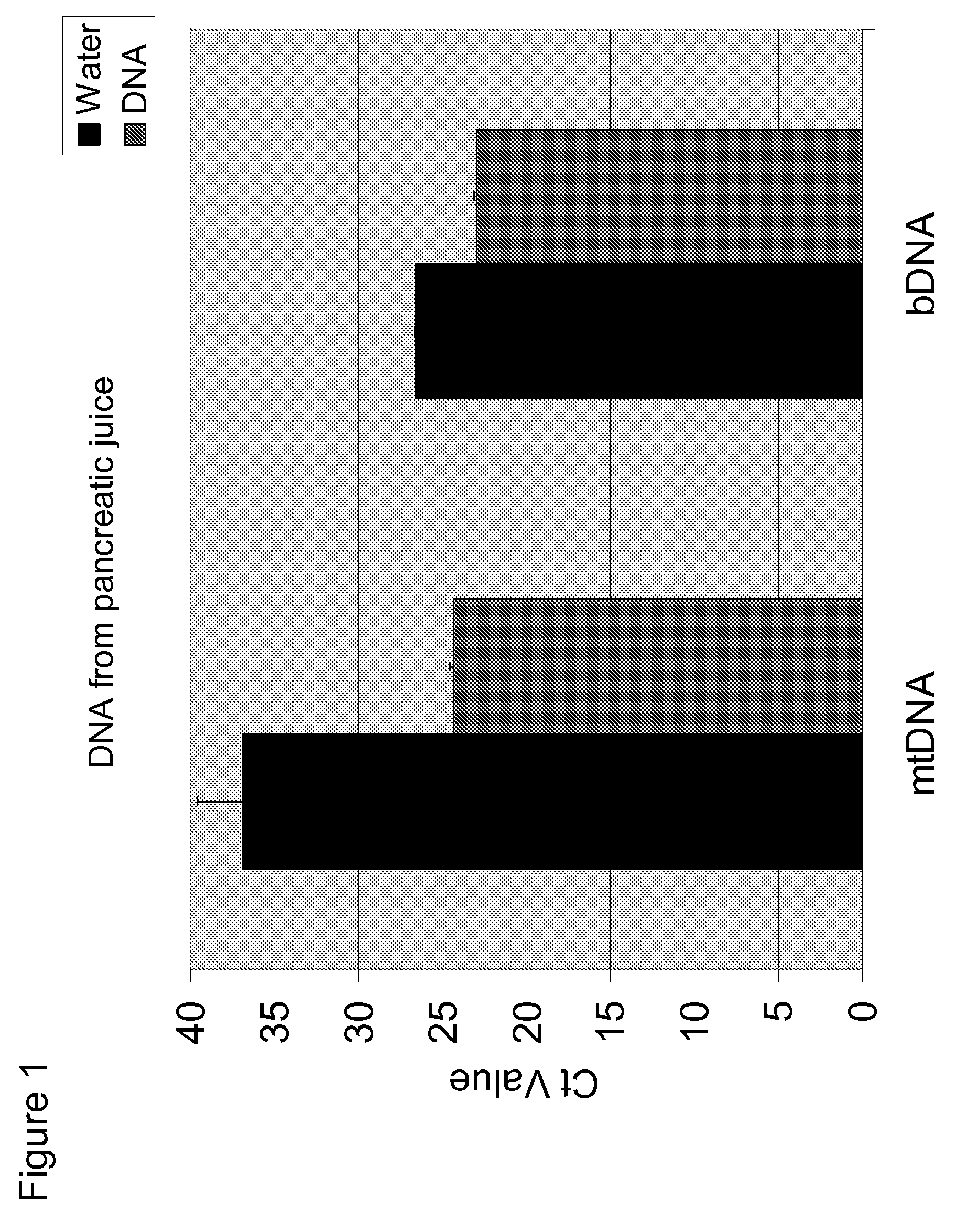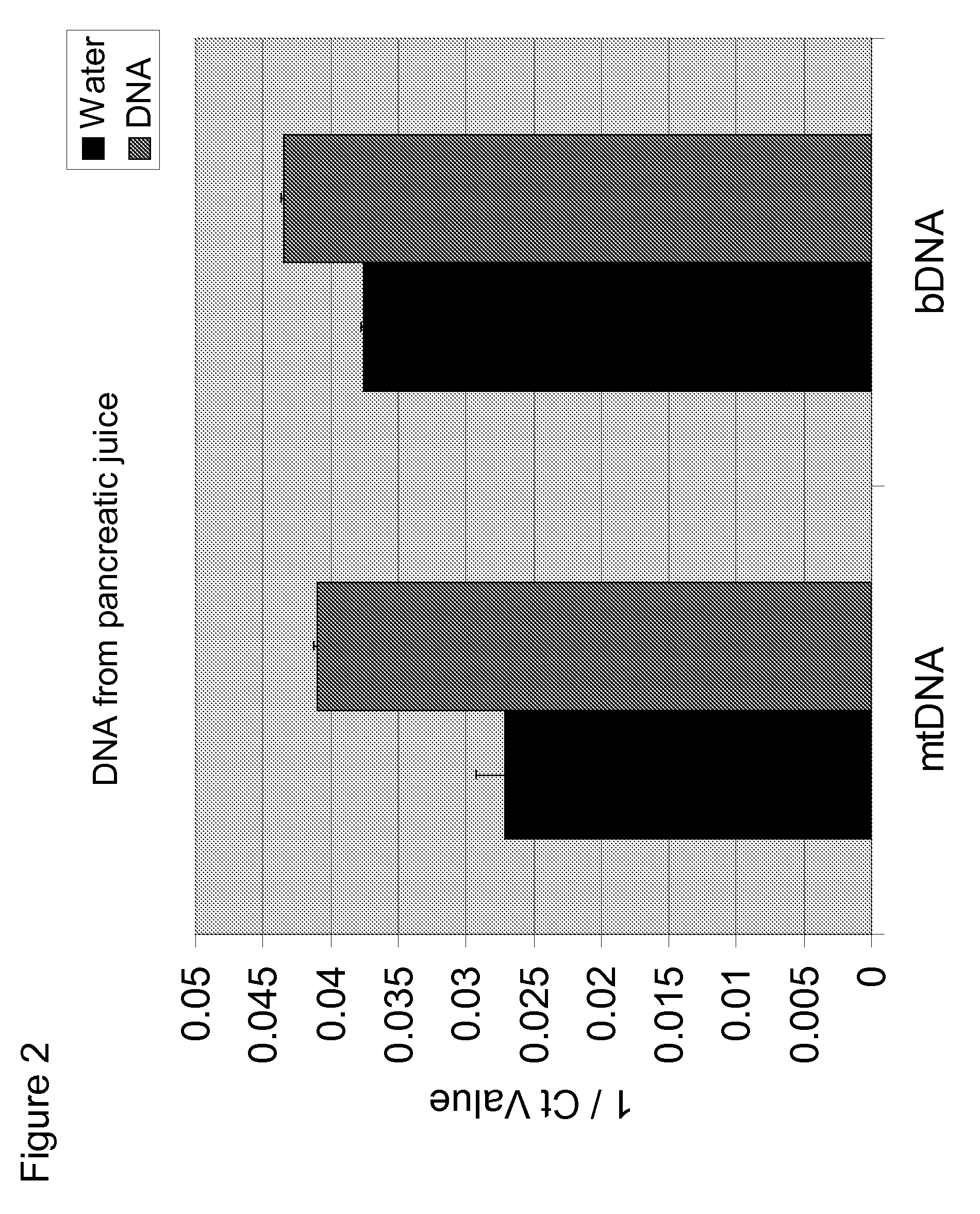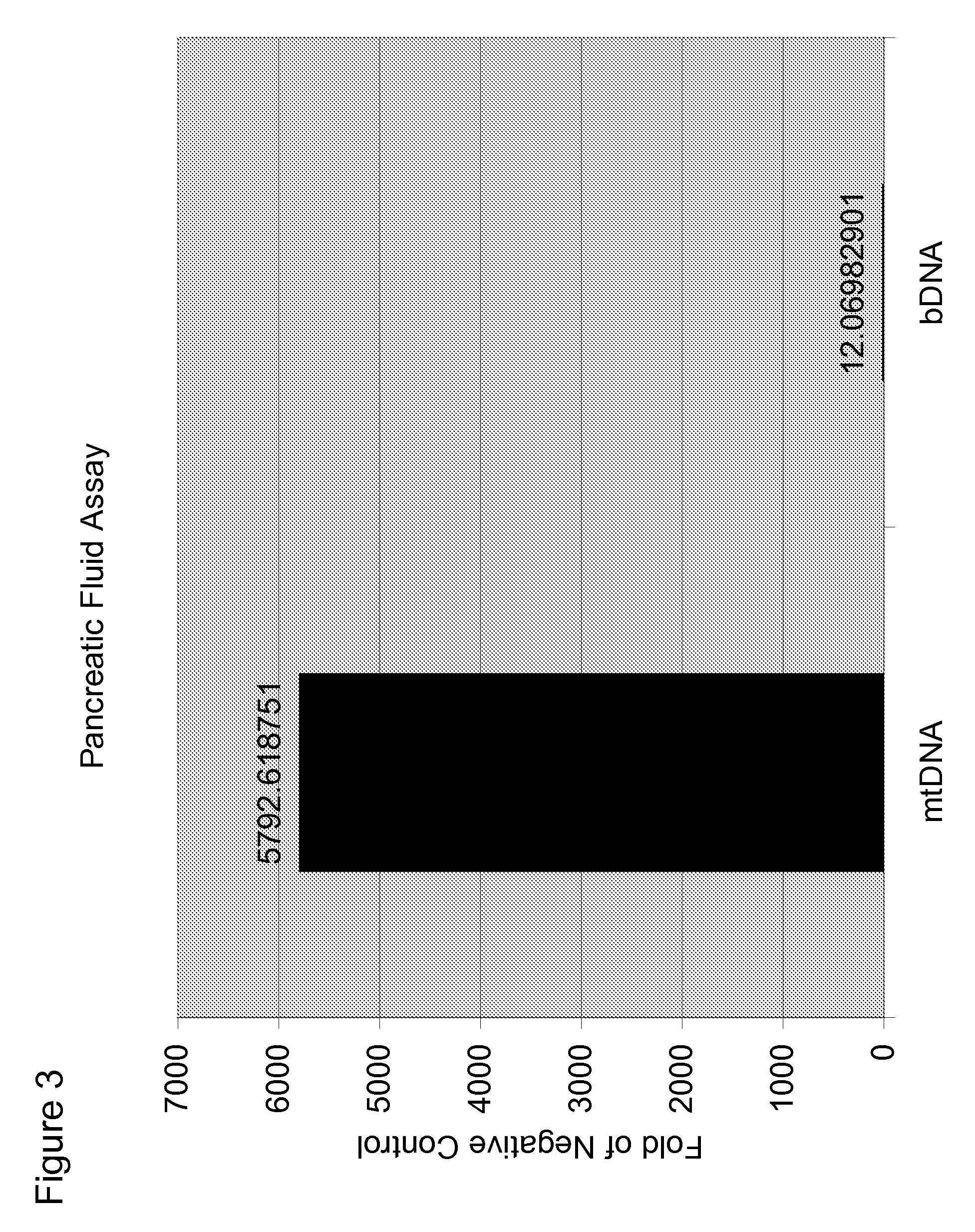Methods for predicting and treating infection-induced illnesses and predicting the severity of infection-induced illnesses
a technology which is applied in the direction of biocide, antibody medical ingredients, peptide/protein ingredients, etc., can solve the problems of no diagnostic or predictive assay, no diagnostic assay for predicting the severity of infection-induced illnesses, etc., and achieve the effect of reducing the number of false positives
- Summary
- Abstract
- Description
- Claims
- Application Information
AI Technical Summary
Benefits of technology
Problems solved by technology
Method used
Image
Examples
example 1
Methods for qPCR Amplification of Bacterial DNA and Mitochondrial DNA
[0086]Exemplary methods for qPCR of bacterial DNA and mitochondrial DNA from a sample are described below. DNA may be prepared from 200 μL plasma using QIAamp DNA Blood Mini kit from Qiagen (Valencia, Calif.) according to the manufacturer's protocol. The same amount of DNA may be used for each Real Time PCR reaction using SYBR Green Master Mix (Applied Biosystems, Foster City, Calif.) by Mastercycler ep realplex from Eppendorf (Foster City, Calif.). Primers for mtDNA markers Cyt B, COX III, NADH, and the nuclear DNA marker, GAPDH, may be synthesized by a commercial manufacturer (e.g., Invitrogen) (Table 4). A standard curve may be created to quantify mtDNA concentration using purified mtDNA with Cyt B as the target. All data analysis may be performed according to the manufacturer's protocol.
example 2
Pancreatitis is Associated with an Increased Level of mtDNA in Pancreatic Fluid
[0087]Experiments were performed to determine whether mtDNA was associated with pancreatitis. In these experiments, DNA was isolated from 200 μL pancreatic juice and eluted with 80 μL water. qPCR was performed on the samples using primers for mitochondrial cytochrome B (mtDNA) and 16S rRNA (bDNA). Water was used as a negative control. The results are shown in FIG. 1-3. The data show that mtDNA is detected in pancreatic juice in subjects having pancreatitis (Ct≈24-25) at a level greater than the water control (Ct≈37).
TABLE 1Exemplary Real Time PCR PrimersGeneSequence(SEQ ID NO:)Human cytochrome B (CytB)5′-atgaccccaatacgcaaaat-3′ (forward)(1)5′-cgaagtttcatcatgcggag-3′ (reverse)(2)Human cytochrome C oxidase5′-atgacccaccaatcacatgc-3′ (forward)(15)subunit III (COX III)5′-atcacatggctaggccggag-3′ (reverse)(16)Human NADH dehydrogenase5′-atacccatggccaacctcct-3′ (forward)(5)(NADH)5′-gggcctttgcgtagttgtat-3′ (reverse...
example 3
Shiga Toxin-1 Administration Induces an Increase in mtDNA in Baboons
[0088]Experiments were performed to determine if a bacterial endotoxin would induce an increase in mtDNA in the serum of baboons. In these experiments, baboons were intravenously administered shiga toxin-1. The levels of mtDNA and bacterial rRNA in the serum of the baboons were measured using qPCR between 0 and 96 hours after shiga toxin-1 administration. The primers used in qPCR were specific for mitochondrial cytochrome B (mtDNA) and bacterial 16S rRNA (bDNA). The primers for baboon mitochondrial cytochrome B (mtDNA) used were: 5′-ATGGAATTTCGGCTCACTTC-3′ (forward primer; SEQ ID NO: 22) and 5′-GAAGGCAGAGGAGGTGTCTG-3′ (reverse primer, SEQ ID NO: 23).
[0089]The data demonstrate an increase in the amount of mtDNA levels in the serum of baboons over time following injection with shiga toxin-1 (FIG. 4). The ratio of mtDNA to bacterial DNA also increased over time following injection with shiga toxin-1 (FIG. 4).
PUM
| Property | Measurement | Unit |
|---|---|---|
| Time | aaaaa | aaaaa |
| Time | aaaaa | aaaaa |
| Volume | aaaaa | aaaaa |
Abstract
Description
Claims
Application Information
 Login to View More
Login to View More - R&D
- Intellectual Property
- Life Sciences
- Materials
- Tech Scout
- Unparalleled Data Quality
- Higher Quality Content
- 60% Fewer Hallucinations
Browse by: Latest US Patents, China's latest patents, Technical Efficacy Thesaurus, Application Domain, Technology Topic, Popular Technical Reports.
© 2025 PatSnap. All rights reserved.Legal|Privacy policy|Modern Slavery Act Transparency Statement|Sitemap|About US| Contact US: help@patsnap.com



